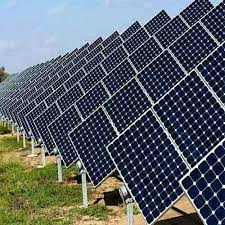
Breaking News
 Tucker and Col. Macgregor Warn How Neocons Are Exploiting the Drug Crisis to Drag America Into War
Tucker and Col. Macgregor Warn How Neocons Are Exploiting the Drug Crisis to Drag America Into War
 Where The World Eats The Most (And Least) Meat
Where The World Eats The Most (And Least) Meat
 The Baseboard Repair Method That Changes Everything!!!
The Baseboard Repair Method That Changes Everything!!!
 Hurricane Melissa intensified Wednesday night; The Cat. 2 storm is accelerating toward Bermuda
Hurricane Melissa intensified Wednesday night; The Cat. 2 storm is accelerating toward Bermuda
Top Tech News
 Graphene Dream Becomes a Reality as Miracle Material Enters Production for Better Chips, Batteries
Graphene Dream Becomes a Reality as Miracle Material Enters Production for Better Chips, Batteries
 Virtual Fencing May Allow Thousands More Cattle to Be Ranched on Land Rather Than in Barns
Virtual Fencing May Allow Thousands More Cattle to Be Ranched on Land Rather Than in Barns
 Prominent Personalities Sign Letter Seeking Ban On 'Development Of Superintelligence'
Prominent Personalities Sign Letter Seeking Ban On 'Development Of Superintelligence'
 Why 'Mirror Life' Is Causing Some Genetic Scientists To Freak Out
Why 'Mirror Life' Is Causing Some Genetic Scientists To Freak Out
 Retina e-paper promises screens 'visually indistinguishable from reality'
Retina e-paper promises screens 'visually indistinguishable from reality'
 Scientists baffled as interstellar visitor appears to reverse thrust before vanishing behind the sun
Scientists baffled as interstellar visitor appears to reverse thrust before vanishing behind the sun
 Future of Satellite of Direct to Cellphone
Future of Satellite of Direct to Cellphone
 Amazon goes nuclear with new modular reactor plant
Amazon goes nuclear with new modular reactor plant
 China Is Making 800-Mile EV Batteries. Here's Why America Can't Have Them
China Is Making 800-Mile EV Batteries. Here's Why America Can't Have Them
Solar Panels That Make Electricity at Night are Finally Here - And They're Cheap...

About 750 million people in the world do not have access to electricity at night. Solar cells provide power during the day, but saving energy for later use requires substantial battery storage.
Researchers from Stanford University constructed a photovoltaic cell that harvests energy from the environment during the day and night, avoiding the need for batteries altogether. The device makes use of the heat leaking from Earth back into space—energy that is on the same order of magnitude as incoming solar radiation.
"You want the thermoelectric to have very good contact with both the cold side, which is the solar cell, and the hot side, which is the ambient environment," said author Sid Assawaworrarit. "If you don't have that, you're not going to get much power out of it."
At night, solar cells radiate and lose heat to the sky, reaching temperatures a few degrees below the ambient air. The device under development uses a thermoelectric module to generate voltage and current from the temperature gradient between the cell and the air. This process depends on the thermal design of the system, which includes a hot side and a cold side.

 China Innovates: Transforming Sand into Paper
China Innovates: Transforming Sand into Paper

